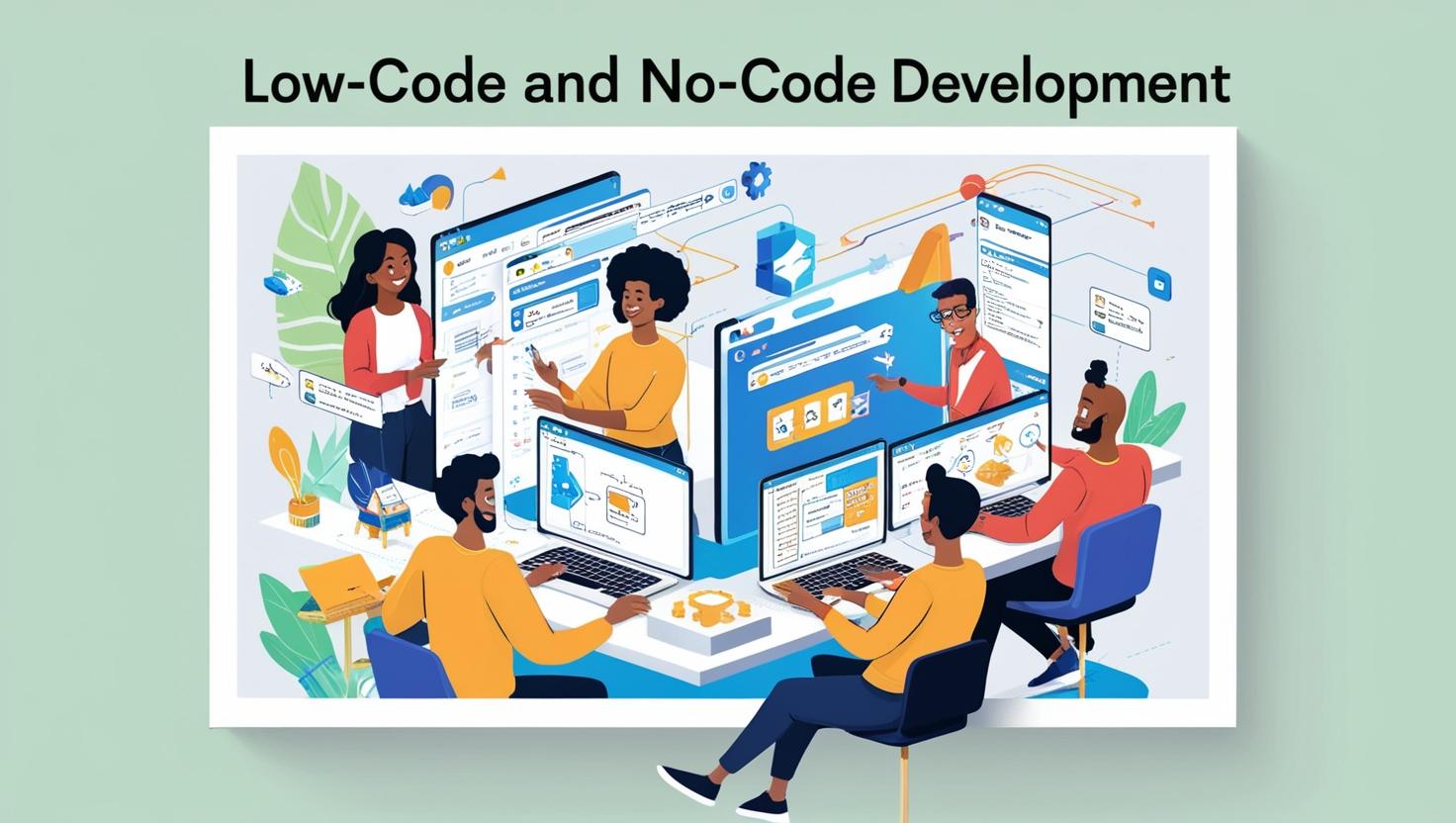
08 Feb Low-Code and No-Code Development: The Future of Software Creation
Technology is evolving at an unprecedented pace, and businesses are looking for faster, more efficient ways to develop software. Low-code and no-code development have emerged as game-changing solutions that enable companies to build applications quickly, with minimal coding expertise.
But what exactly are low-code and no-code platforms? How do they differ, and what are their benefits and limitations? In this blog, we will explore how these revolutionary development approaches are shaping the future of software creation.
What is Low-Code Development?
Low-code development platforms provide a visual development environment where users can build applications using drag-and-drop interfaces while still having the flexibility to write custom code when needed. These platforms significantly reduce manual coding effort, allowing developers to build complex applications much faster.
Key Features of Low-Code Platforms:
✅ Visual development tools – Drag-and-drop functionality for UI and workflow design
✅ Pre-built integrations – Connect with databases, APIs, and third-party services easily
✅ Custom coding options – Developers can extend functionalities with traditional programming
✅ Rapid deployment – Applications can be built and deployed in weeks instead of months
When to Use Low-Code Development?
Low-code platforms are ideal for:
- Enterprise applications that require customization and integration with existing systems
- Internal business tools like CRM, HR management, and workflow automation
- Custom apps that need both speed and flexibility in development
What is No-Code Development?
No-code development platforms allow users to build applications without writing any code. They use intuitive visual builders and pre-configured components, enabling even non-technical users to create functional applications.
Key Features of No-Code Platforms:
✅ 100% visual development – No coding required
✅ Pre-built templates and workflows – Quickly launch apps without starting from scratch
✅ Simple drag-and-drop interface – Build applications with ease
✅ Faster prototyping – Ideal for MVP (Minimum Viable Product) development
When to Use No-Code Development?
No-code platforms work best for:
- Startups and small businesses that need quick solutions
- Internal automation (e.g., form-based workflows, approval systems)
- Simple customer-facing applications like chatbots and landing pages
Low-Code vs. No-Code: What’s the Difference?
| Aspect | Low-Code Development | No-Code Development |
|---|---|---|
| Coding Requirement | Minimal coding required | No coding required |
| Target Users | Developers & IT professionals | Business users & non-tech teams |
| Flexibility | High (custom integrations & coding allowed) | Limited (pre-configured options only) |
| Complexity of Apps | Can build advanced, scalable applications | Best for simple applications |
|
Speed of Development |
Faster than traditional coding | Extremely fast |
While no-code platforms enable business users to create apps without technical skills, low-code platforms strike a balance by providing both automation and coding flexibility.
Benefits of Low-Code and No-Code Development
1. Faster Development Time
Traditional software development can take months or even years, while low-code and no-code platforms allow businesses to build applications in weeks or days.
2. Reduced Development Costs
Hiring professional developers can be expensive. Low-code and no-code platforms enable companies to develop apps with fewer resources, cutting development costs by up to 70%.
3. Increased Accessibility
With no-code platforms, even non-technical users can create functional applications, eliminating reliance on IT teams for every small update.
4. Greater Business Agility
Companies can quickly adapt to market changes by modifying applications on the fly without going through lengthy development cycles.
5. Enhanced Collaboration Between Teams
Business teams and IT professionals can work together seamlessly, accelerating digital transformation and innovation.
Challenges & Limitations of Low-Code and No-Code
- Limited Customization – No-code platforms may not support advanced custom functionalities required for complex applications.
- Security Concerns – Some low-code/no-code platforms rely on third-party hosting, raising data security and compliance issues.
- Scalability Issues – While low-code solutions can scale, no-code apps may struggle to handle high traffic or complex integrations.
The Future of Low-Code and No-Code Development
As businesses demand faster and more efficient software solutions, low-code and no-code development will continue to grow. By 2025, Gartner predicts that 70% of new applications will be built using these platforms.
Companies looking to enhance their digital transformation strategy should consider integrating low-code and no-code tools into their workflows.
How PT. KDN Can Help
PT. KDN specializes in providing custom software solutions, whether you need:
- Low-code application development for rapid business automation
- Custom enterprise solutions tailored to your specific needs
- Cloud-based scalable applications with advanced integrations
Our team of experts ensures that businesses leverage the right technology to achieve efficiency, flexibility, and growth.


Sorry, the comment form is closed at this time.